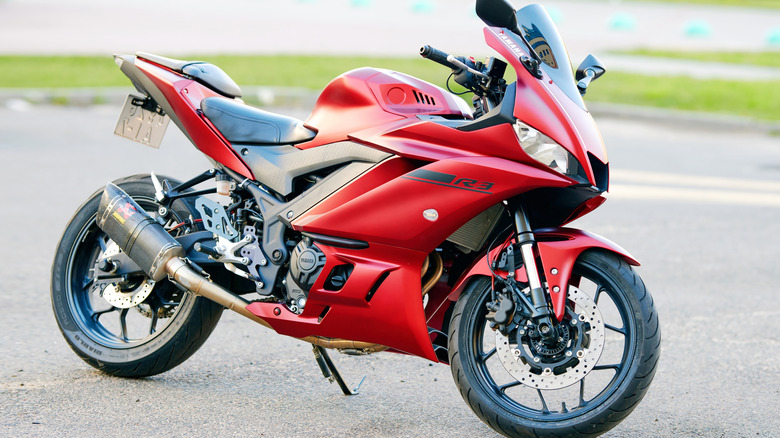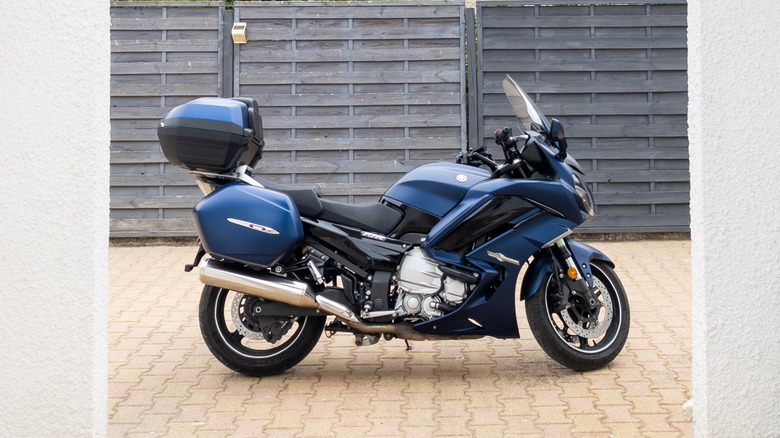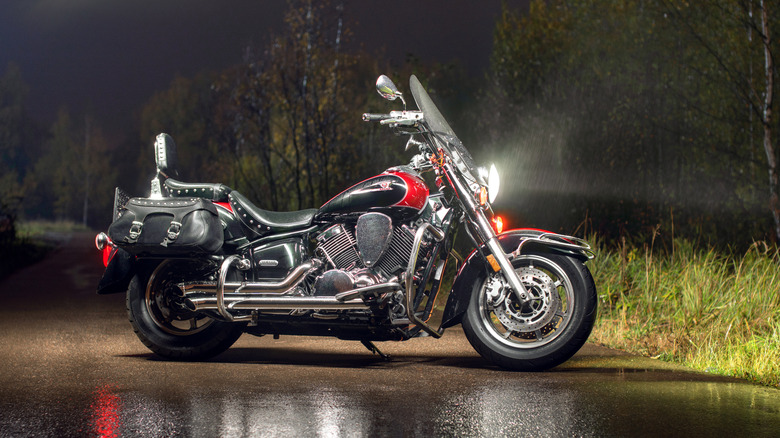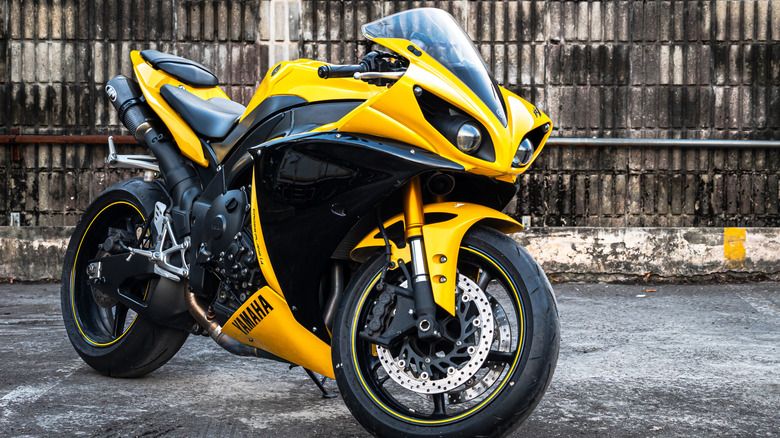5 Of The Best Yamaha Motorcycle Models To Buy Used (According To Owners)
Yamaha is considered one of the most popular motorcycle manufacturers, backed by a deep history and strong heritage. As one of the pillars of the Big Four Japanese brands, Honda, Yamaha, Kawasaki, and Suzuki each carry their own identity. Where Honda is seen as the sensible, mass-market brand built on volume, Yamaha brings a far stronger emotional appeal. Their bikes are known for striking a balanced approach: sporty, engaging, and rider-focused machines that don't compromise on comfort, road manners, or reliability.
This is why they're hot commodities, and thanks to depreciation, used Yamaha bikes often offer excellent value for riders looking to get the most bang for their buck. That said, some Yamaha models make far more sense to buy used than others, and in this list, we've highlighted the ones that would make any new-bike showroom cry in the corner. Prices mentioned are accurate at the time of writing and are subject to change.
Yamaha R3
Starting the list with one of the lightest and most sought-after Yamaha bikes, the R3. Initially launched in 2015, the R3 has been the company's entry point to its sports series. Powered by a 321cc parallel-twin engine producing 42 horsepower and 21 lb-ft of torque, it may not sound very powerful and does lack in power compared to something like a Ninja 400/500. What it lacks in power, it makes up for in other aspects compared to other bikes in its segment, mainly because of its rev-happy nature, a more sophisticated suspension, and its gorgeous looks. According to experts, the Yamaha R3 has best-in-class suspension tuning. It balances stiffness without overdoing it and without sacrificing comfort. Besides these advantages, it is also a very good-looking beginner bike. Drawing inspiration from a poster-worthy R1, it looks great, especially in its signature blue colour.
According to some riders, the R3 is also a more beginner-friendly package. Its main rival, the Ninja 400/500, uses lighter clutch springs that allow slips when you open the throttle, which causes the clutch to wear out faster. This is good for smooth shifting at low speeds, but can also make the bike tricky to shift gears when riding spiritedly. The Yamaha R3 doesn't have that issue; its clutch is reportedly very light and smooth, with no extra slippage, making it ideal for beginners.
In terms of pricing, an early-gen 2015–2017 Yamaha R3 can be seen on classifieds for just under $3,000, which is an absolute bargain. While you're looking at somewhere around $4,000–5,000 for a newer Gen 2 model with fewer miles. Still a great deal.
FJR-1300
When we talk about sport-touring bikes, the BMW K1600 and the Honda Goldwing are the first things that come to mind. But BMW and Honda weren't the only manufacturers taking sport-touring to the next level. Yamaha's FJR-1300, often overlooked, is the quintessential sport-touring machine. Launched in 2003, it is known to be incredibly reliable, partly thanks to its bulletproof powertrain, a 1300cc inline-four engine producing 145 horsepower and 99 lb-ft of torque. It's capable of easily registering 100,000 miles without any issues, making it one of the best used touring bikes.
Besides its reliability, it is known as one of the best touring motorcycles out there, striking the balance between performance, comfort, and drivability. With a 0–60 time of 3.5 seconds and even lower in later generations, and a top speed of 153 mph, it was also swift. It also offers features that touring riders value, including heated grips, an adjustable windscreen, cruise control, generous luggage options, and a low-maintenance shaft drive, making it a true purebred touring bike. Another important aspect for sports touring is range, and with 6 gallons of capacity, the FJR-1300 can cover up to 300 miles between fill-ups.
Interestingly, it is also known to handle well on winding roads, which is high praise for a bike that weighs 635 lbs. Pricing as low as $3,000 for early generations makes it a bargain for such a capable and powerful machine. It's also the bike of choice for police patrol units in various countries, underscoring its tank-like build and overall capability.
Yamaha V-Star 1100
Yamaha's answer to the V-twin cruiser-type bike, a recipe perfected by Harley-Davidson, but where things differ is in terms of reliability. While Harleys are generally considered less reliable and more experience-focused, the Yamaha V-Star lives on the other end and comes out as one of the most reliable bikes. Introduced in 1999 at the peak of the chopper craze, when V-twin rumble ruled the streets, Yamaha wanted to make a cruiser-style bike with proven Japanese durability and refinement.
The attention to detail and the use of high-quality components in trying to outgun Harley and other competitors made this bike not only reliable but also really comfortable, hence a perfect cruiser. The engine also played a vital role, a smooth and torquey 1100cc V-twin producing 62 horsepower and 63 lb-ft of torque, delivering strong low-end pull, effortless highway cruising, and the classic rumble riders expect.
Because of its long production run, older bikes can now be had for as little as $2,700 or as much as $4,000, making them a bargain. But usually, with exotic bikes, they tend to burn a hole in your pocket after sales. However, it uses a low-maintenance shaft drive and is known to easily clock well over 100,000 miles when appropriately maintained, further cementing its reputation as a rock-solid cruiser. There are no issues to look out for; early-gen models reportedly had a starter-clutch issue, which was fixed. Apart from that, if it's regularly serviced, it can cover many miles.
Yamaha Ténéré 700
The Ténéré 700 is the newest model on this list and sits in the adventure, better known as ADV, segment. Yamaha has a long history of building off-road-focused, Dakar-winning machines dating back to the late 1970s, which is where the Ténéré name originated. After decades of development across multiple rally and road-going models, Yamaha finally launched the Ténéré 700 as a global product, arriving in the U.S. in 2020.
This middle-ground approach makes it far more manageable than heavier ADVs like the KTM 1290 Super Adventure and BMW R 1250 GS Adventure, both packing 130+ horsepower and weighing well over 500 lbs. They are great for touring but often too powerful, too heavy, and too expensive for riders who want a simpler, more off-road-focused machine. Meanwhile, its middleweight counterparts like the Suzuki V-Strom 650 and the BMW F850GS are comparable in size and power but still not as capable as the Ténéré 700.
What really sets the Ténéré apart, especially on the used market, is its durability and simplicity. The Ténéré 700 uses a lightweight chassis paired with the proven 689cc CP2 engine from the MT-07, producing a healthy 72 horsepower while weighing just 483 lbs, which is low for an ADV bike. The bike's minimal electronics and rugged build make it a low-risk used purchase, and its parts and maintenance costs remain far lower than those of its European rivals. Even mildly used off-road examples remain easy to live with, and prices are reasonable, around $6,000 for a 2021 model with roughly 9,000 miles, with lower-mileage bikes costing a bit more. Thanks to its simple, rugged design, the Ténéré stays affordable to refresh and remains a smart, reliable buy on the used market.
Yamaha R1
For more than two and a half decades, the Yamaha R1 has been the flagship super-sports model for the blue team, and it has changed the world of super sports bikes as we know it. Upon its debut in 1998, it was the most powerful and lightest bike in its segment. With subsequent redesigns and enhancements, the R1 has stayed relevant even in the world of 300+ horsepower hypersport bikes. R1's relevance and success come from bringing racing tech to the road, like its crossplane crank engine, advanced dampers, and lightweight carbon-fibre body; keeping it among the top track performers.
The early bikes used a 998cc flat-plane crank inline four, and even the early 2006 models produced a whopping 180 horsepower, which is only slightly less than the crossplane crank engine introduced post 2009. According to the owners, there isn't much that goes wrong with the R1 when serviced correctly, as with any high-performance bike. So sticking to ones with a good service record is key. Secondly, owners suggest avoiding bikes with heavy modifications or track abuse, as these can hide wear and lead to costly repairs.
Now the latest R1 costs a pretty penny, starting from around $19,000. And given the R1's fan following and demand, the used models aren't as affordable as some of the bikes mentioned here. That said, mid-gen 2007 R1s with no mods and low miles can be found for about $6,995 at the very least. Newer ones from 2017 onward command a heavy premium, reaching up to $15,500 for low-mileage models. One thing to note is that, being a litre-class motorcycle, it is not considered beginner-friendly.





